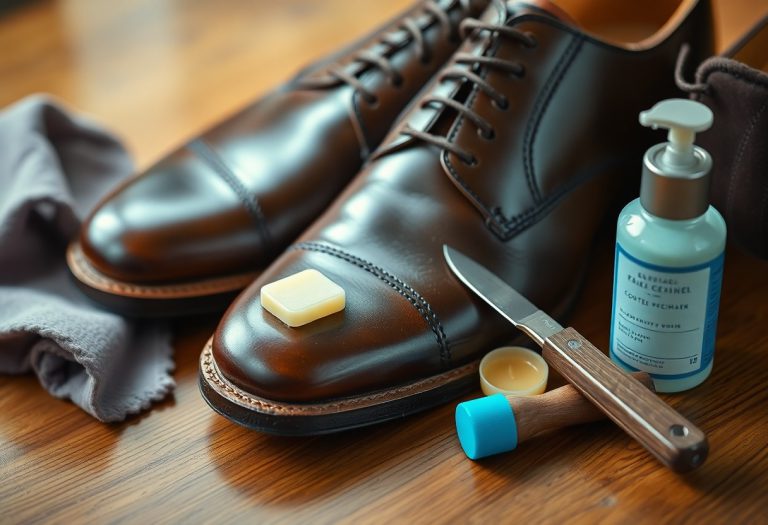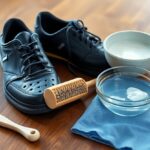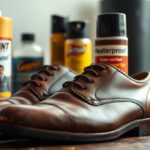Neglecting proper wax removal techniques can lead to irreversible damage to your leather shoes. When candle wax accidentally drips onto your leather footwear, it becomes crucial to use a safe and effective removal method that maintains the quality of the leather. This comprehensive guide provides in-depth, step-by-step instructions on how to efficiently eliminate stubborn wax stains using everyday household items like a hair dryer and paper towels. You will discover the ideal temperature settings to apply and the precise sequence of cleaning actions to execute. By adhering to these guidelines, you can restore your leather shoes to their pristine condition while avoiding harsh cleaning methods that could potentially crack or dry out the leather.
Identifying and Understanding the Dangers of Wax on Leather Footwear
Wax spills on leather shoes often occur during social gatherings or dinner parties, leaving behind a stubborn stain that necessitates specialized cleaning methods. The wax adheres firmly to the leather surface, rendering conventional cleaning techniques ineffective. To accomplish a successful removal process that safeguards the leather, it is essential to take immediate action and apply the right techniques. Recognizing the urgency of the situation can make all the difference in preserving the quality of your leather footwear.
Exploring the Unique Properties of Various Candle Wax Types
Understanding the different types of wax is essential for effective removal:
- Paraffin wax – the most common type, made from petroleum
- Soy wax – a natural alternative with a lower melting point, ideal for eco-conscious consumers
- Beeswax – a natural wax known for its higher melting point and durability
- Stearin – derived from fatty acids, leading to a firmer texture
By familiarizing yourself with these characteristics, you can select the most suitable removal technique for your specific circumstances, ensuring a more efficient cleaning process that effectively removes the wax without causing damage.
| Wax Type | Properties |
|---|---|
| Paraffin | Melts at 99°F, petroleum-based |
| Soy | Melts at 85°F, eco-friendly |
| Beeswax | Melts at 145°F, natural |
| Stearin | Melts at 132°F, hard texture |
| Blend | Various melting points, mixed properties |
Recognizing the Potential Damage Caused by Wax on Leather Shoes
A wax spill can cause immediate surface damage to your leather shoes. When hot wax comes into contact with leather, it seeps into the material’s pores, solidifying and adhering as it cools. This can create unsightly stains that are difficult to remove.
If you delay the removal process, you risk permanent staining of your shoes. The fatty acids within the wax can compromise the leather’s protective finish, while the heat from the wax may lead to discoloration or surface irregularities. Fortunately, the polish and cream already applied to your shoes provide a certain level of protection against these harmful effects, but quick action is still essential for the best results.
Essential Tools and Materials Needed for Effective Wax Removal
To successfully remove candle wax safely and effectively from your leather shoes, having the right materials on hand is crucial. Preparing all necessary items beforehand will streamline the process and help avoid any potential damage to your footwear.
Must-Have Cleaning Supplies for Wax Removal
Your toolkit should consist of a hair dryer with adjustable heat settings, clean paper towels, pure heptane for removing grease stains, and leather care products like shoe cream and wax polish for post-cleaning treatment. The success of your wax removal largely hinges on using the appropriate supplies in the correct order, which is essential for achieving optimal results.
Safety Equipment and Precautions to Ensure a Safe Cleaning Process
When dealing with heat and chemicals, adhering to safety protocols is paramount. You will need protective gloves, ensure adequate ventilation, and keep your workspace organized. Maintain a safe distance between the hair dryer and the leather to prevent any heat-related damage.
Paying close attention to temperature control and timing is critical during the cleaning process. It’s advisable to work in a well-ventilated area when utilizing heptane, as its fumes can be harmful. Always conduct a heat test on a small, inconspicuous area of your shoe to verify that the heat won’t cause any damage. Additionally, keeping a fire extinguisher nearby is a wise precautionary measure.
Preparation Steps to Facilitate an Efficient Wax Removal Process
Before initiating the wax removal process, gather all necessary materials: a hair dryer, clean paper towels, pure heptane, and leather care products. Ensure you are working in a well-ventilated area, as heptane releases strong fumes that require good airflow. Organize your workspace with sufficient lighting and a clean, flat surface where you can securely place your shoes for effective cleaning.
Assessing the Damage Prior to Cleaning
No candle wax removal process is complete without first evaluating the extent of the damage. Carefully examine how deeply the wax has penetrated the leather and identify all affected areas. Avoid attempting to scrape off hardened wax, as this can further damage your leather shoes. It’s also crucial to determine whether your shoes possess a protective polish coating, as this layer will help safeguard the leather during the cleaning procedure.
Conducting a Preliminary Test in a Hidden Area of the Shoe
A vital safety measure involves testing your cleaning method on a concealed section of your shoe, such as the inner heel area. Apply heat from your hair dryer at a medium setting for 10-15 seconds to observe how the leather reacts to the temperature, ensuring it remains unharmed.
After completing the test, closely monitor the leather’s response to both heat and heptane. If you notice any discoloration or damage, stop the process immediately and consult with a professional shoe repair service. A successful test will reveal the wax softening without impacting the leather’s color or texture, indicating that you can proceed with the complete cleaning process.
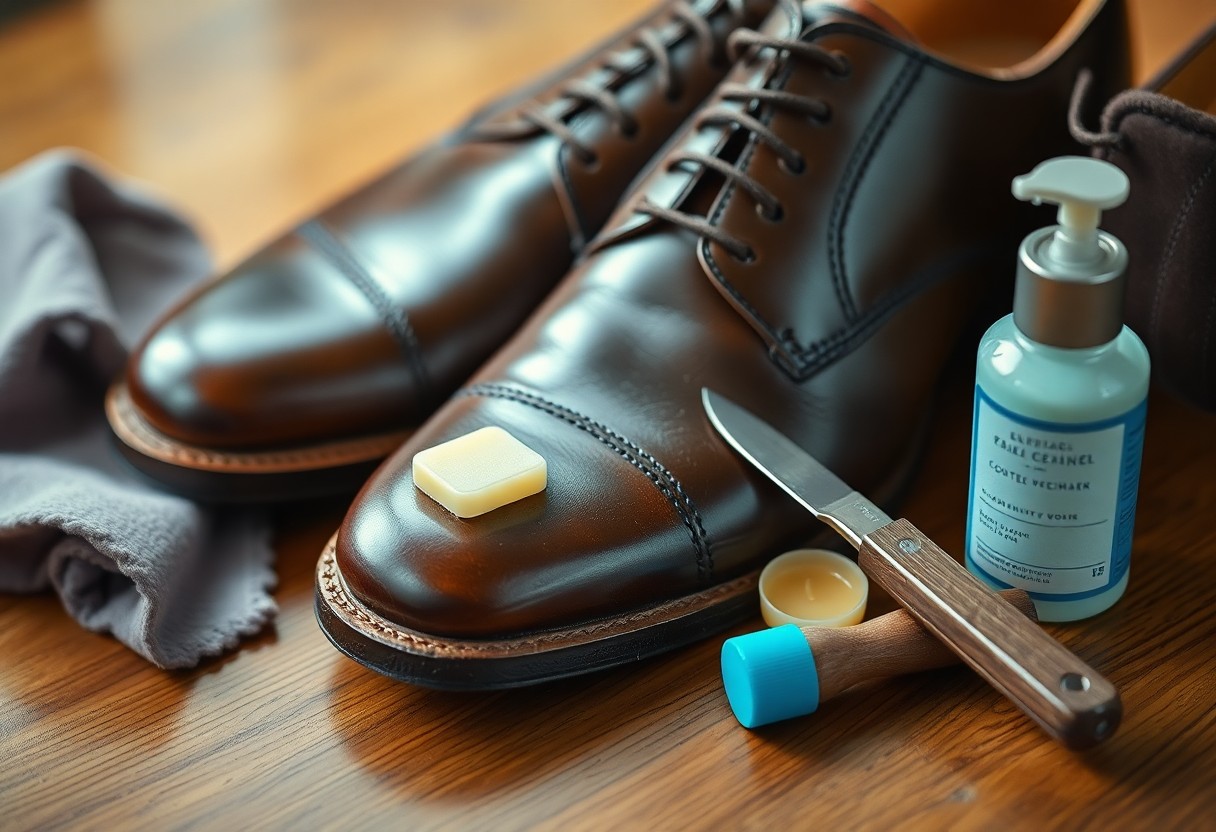
Step-by-Step Cleaning Techniques for Effective Wax Removal
Protect your leather shoes by applying proven techniques to remove candle wax efficiently. The optimal approach combines heat and absorption methods for the best results. Avoid using direct heat sources, such as irons, as they can cause irreversible damage to your leather. Your success will rely on adhering to the correct sequence of steps while employing the right tools.
Heat Treatment: Utilizing a Hair Dryer for Wax Removal
To begin the removal process, set your hair dryer to medium heat. Hold the dryer 6-8 inches away from the waxed area and move it in circular motions. Stop immediately if the leather feels excessively hot to the touch. Gentle, gradual heating is much more effective for your leather shoes than intense bursts of heat, which can cause additional harm.
Mastering the Paper Towel Wiping Technique
Start wiping as soon as you notice the wax beginning to soften. You need to press a clean paper towel against the melted wax area with firm but gentle pressure. Ensure that your wiping movements are directional—always wipe away from the center of the wax spot to avoid spreading it.
For effective paper towel wiping, use fresh sections of the towel for each wipe to prevent redepositing wax. Gradually, you will see the wax transferring to the paper towel. Patience is key, as this may require several repetitions until the surface is entirely clean.
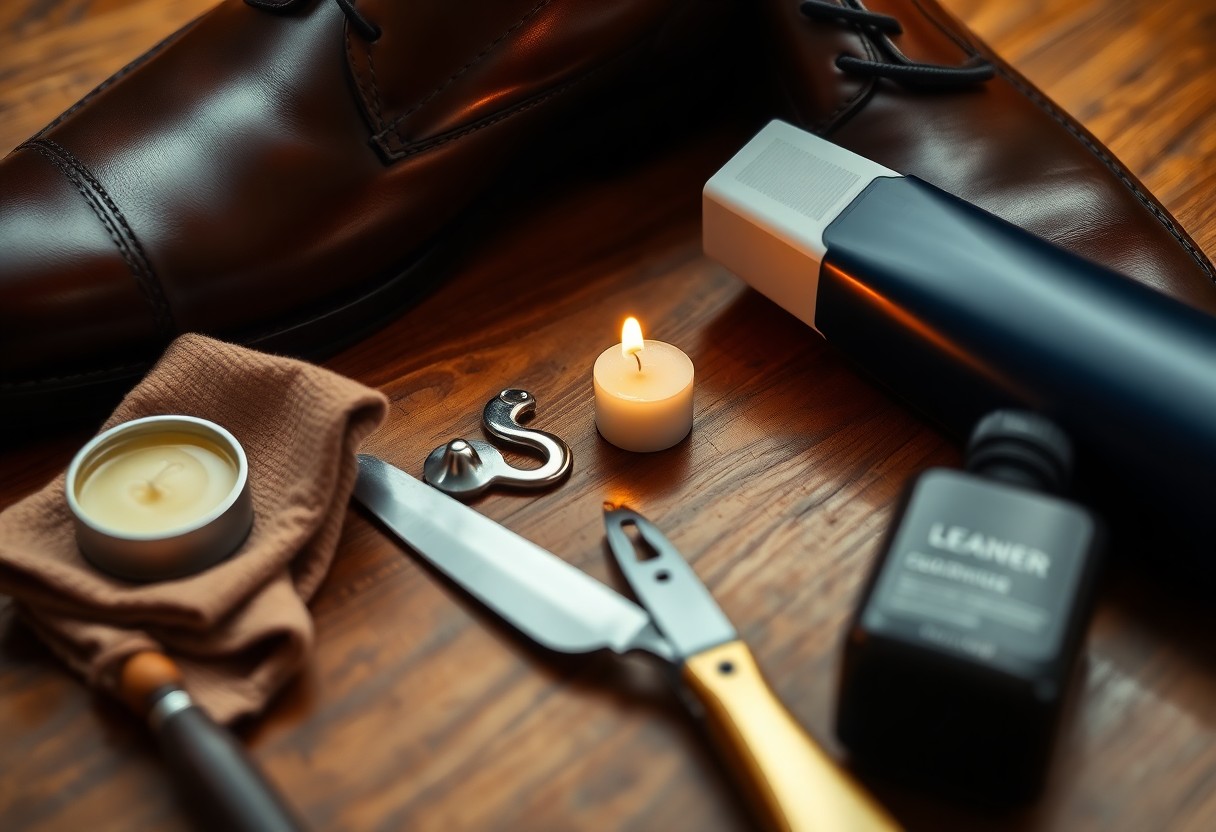
Advanced Techniques for Comprehensive Restoration of Leather Shoes
Even after the initial removal of candle wax, your leather shoes may require advanced cleaning techniques for complete restoration. Follow specific steps and utilize particular solutions to ensure effective and safe treatment of your footwear.
- Controlled temperature heat treatment
- Application of a specialized chemical solution
- Leather conditioning process
- Final polishing steps for enhanced shine
Equipment and Material Requirements for Advanced Cleaning
| Equipment | Materials |
| Hair dryer | Heptane solution |
| Clean cloths | Leather conditioner |
Eliminating Residual Grease Stains Post-Wax Removal
Even after your initial cleaning efforts, stains from candle wax may still linger. To effectively remove these marks, use gentle circular motions with a clean microfiber cloth. This process requires patience, as aggressive rubbing can damage your leather shoes and make the stains worse.
Utilizing Heptane Solution for Stubborn Stain Removal
Stubborn stains often necessitate specialized treatment with heptane solution, readily available in hardware stores. Apply the solution sparingly using a clean cloth, focusing on the affected areas. This chemical is particularly effective in dissolving the stearin and paraffin components of candle wax.
When using heptane solution, it is crucial to implement proper ventilation and safety measures. Always wear protective gloves and ensure that your working area has good airflow. After applying the solution, allow your shoes to air dry for at least 30 minutes before treating them with any leather conditioner to ensure the best results.
Comprehensive Aftercare and Maintenance Strategies for Leather Footwear
After successfully removing wax, your leather shoes require proper care to restore their condition and appearance. Regular maintenance is vital to prevent future damage and prolong the lifespan of your footwear. Cleaning, conditioning, and polishing your shoes will help restore their protective layer and enhance their shine.
Effective Steps for Leather Conditioning After Cleaning
Once you have confirmed that all wax residue is eliminated, apply a high-quality leather conditioner using a soft cloth. Utilize small circular motions to ensure even coverage of the conditioner across the leather surface. Allow the shoes to absorb the product for 15-20 minutes, then buff with a clean cloth. This step is crucial for reintroducing moisture that might have been lost during the wax removal process, helping to keep the leather supple and resilient.
Implementing Preventive Measures for Future Wax Protection
To minimize the chances of future accidents, it is beneficial to maintain a protective layer of polish on your shoes. Regular applications of shoe cream and wax polish create a barrier against stains and help facilitate easier cleanings in the future. This practice not only protects your leather but also helps shield it from harsh substances that could lead to damage.
Leather shoes that receive consistent care are more resistant to stains and wear. Shoes that are properly treated with shoe cream and wax polish offer superior protection against candle wax damage. Without this protective layer, the fatty acids in the wax can permanently affect the leather grain. It is recommended to polish your shoes every 4-6 wears to maintain optimal protection and appearance.
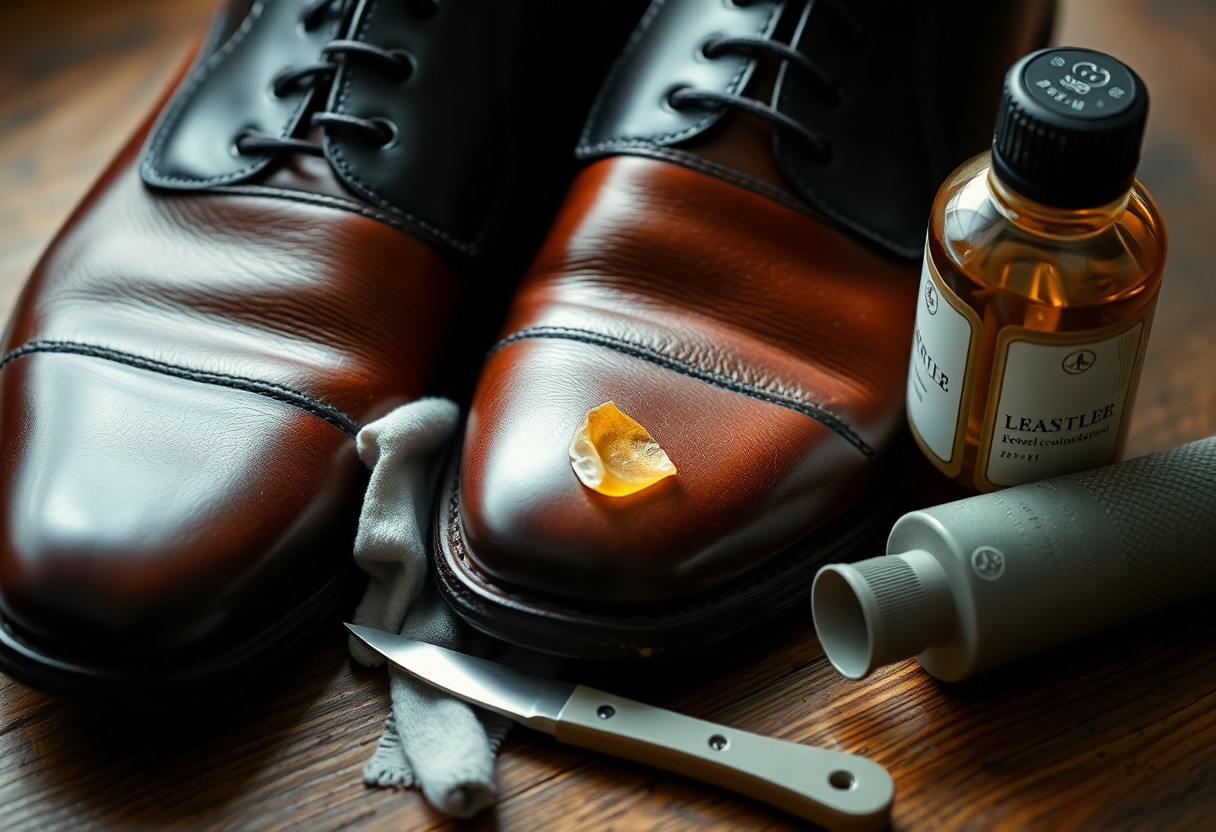
Empower Yourself with Comprehensive Knowledge for Effective Wax Removal
Now that you are equipped with the essential steps to remove candle wax from your leather shoes, you can confidently address such mishaps. Your success hinges on utilizing the right tools and following the correct sequence: applying heat using a hair dryer, carefully removing wax with paper towels, and conducting a final cleaning with heptane. Always ensure to protect your shoes with regular maintenance using shoe cream and polish to prevent any permanent damage from incidents like these. If you ever feel uncertain about the process, don’t hesitate to consult with a local shoe repair professional who can help restore your leather shoes to their original condition.
The Article Guide to Removing Candle Wax from Leather Shoes: Effective Cleaning Methods and Tips appeared first on My Shoes Finder
The Article Effective Cleaning Methods for Removing Candle Wax from Leather Shoes Was Found On https://limitsofstrategy.com
References for Further Reading:
Effective Cleaning Methods for Removing Candle Wax from Leather Shoes
